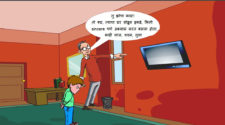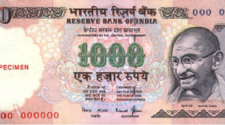Cut to 2020-21 India’s tour of Australia. India began the test series without Sharma’s key ladke, batting ace Rohit and bowling spearhead Ishant. This was the opening for a string of forced absentees in the Indian team. Next, India’s best bowlers Shami and Umesh Yadav, were injured in the first and second test, respectively. In the batting department, the story was similar. K L Rahul got injured in the second test, Ravindra Jadeja and Hanuma Vihari suffered blows in the third test. One respite was the return of Rohit Sharma for the second test. However, Captain Kohli left the squad for paternity leave after the first test. No net gain here.
With seven of its starting eleven missing, the Indian squad was beyond depleted. You cannot even say India B took to the pitch; it was an India C squad with residual net bowlers.
Here is an example of the strangeness of the situation. Due to Covid mandated two-week quarantine on arrival, flying in replacements was not easy. Secondly, due to strict rules on intermixing of players, India did not have access to local net bowlers. So the likes of Washington Sundar and T Natarajan were retained by India from its T20 squad, primarily as training bowlers. In a typical year, they would have flown back after the T20 series. However, the run of injuries meant that these ‘net bowlers’ had to take guard in the final test. India debuted a total of five players in this series. Literally, half of the Indian playing eleven in the last test!
Against this backdrop, the series began on an ominous note. India lost the first match at Adelaide. In a format where teams are supposed to bat for days, the entire Indian line-up was dismissed for thirty-six runs in the first two hours of Day three. The lowest innings score by an Indian team ever. Out came the barrage of criticisms, predictions of a 4 – 0 whitewash. Captain Kohli left the team after the first test, and reigns were handed to Ajinkya Rahane.
Where Kohli is like the swashbuckling hero, full of bluster and fist-pumps, Ajinkya Rahane is his exact opposite. Soft-spoken, calm, rarely seen making a comment. Instead, Rahane talked with his bat, hitting a magnificent century at Melbourne, guiding India to a good win, levelling the series.
The third test at Sydney ended in a draw. However, this was not your typical dull draw; this one was a contest. Test cricket is at its best when the team batting in the last innings plays a game of attrition. India was set a tall target of 407, virtually insurmountable by the standards of test cricket. Batting on the final day of a test match is batting against the elements. After four days of battering , the pitch is a patchwork of rough and smooth zones. The bounce is unpredictable, the spin is tormenting; it is a bowler’s paradise.
Under such conditions, India needed to bat ninety overs with eight wickets in hand. The day belonged to two Indian batsmen who otherwise might never be in the limelight. Pujara and Hanuma Vihari. If you search online for ‘Body blows, Pujara, Day 5,’ you will see that Pujara guarded his wicket with every muscle and bone of his body. He was hit in the ribs, shoulders, thighs, fingers, helmet, toes, basically everywhere. India needed to see 540 deliveries that day; of that Pujara alone handled 205. He took the juice out of the Australian bowlers. After he left, it was a lesson in determination from Vihari. Midway Vihari pulled up his hamstring. New rules of Cricket do not allow for a runner. So Vihari jacked up on painkillers held the fort for the rest of the evening. In numbers, Vihari scored 23 runs off 161 balls. Years later, if someone views the scorecard, Vihari’s 23 will feel insignificant in a game where over 1200 runs were scored. However, only those who watched that entire day’s of Cricket will know the value of Vihari’s knock. The injured soldier stood like a wall between the Australians and Victory.
The stage for the final test match was set on the final day of the fourth test itself. The ‘soft’ Australian Captain, Tim Paine, frustrated by India’s resilience on the last day, cheekily remarked, ‘See you at the Gabba.’ Many angry words were exchanged, but the arrogance about Gabba stood out.
Gabba, Brisbane is the Australian Cricket team’s fortress. They have not lost a single match at The Gabba since 1989. Gabba equals Australian Victory is a set equation.
With a boost in psychological confidence about Gabba, Australia hit a formidable 369 in the first innings. They then pierced the Indian top order and had India by the scruff of their necks at 186/6. All of the remaining five players had debuted in this test series, and one was injured. Australia was all set for a commanding lead in the first innings.
But, the Indian debutants made up for the lack of experience with ‘jigar.’ Against the run of play, debutants Washington Sundar and Shardul Thakur counterpunched with a partnership of 123 runs. Expecting a mountain, the Australians got an ant-hill-sized lead of 33 runs. The partnership itself was terrific and would have been discussed for decades had it not been eclipsed by the happenings on day five.
India was set a target of 328 to win on the final day at Gabba. To put this in context, the highest chase in the fourth innings at Gabba is 236, way back in 1951. If the Australians had their Champagne out, then no one would blame them. India came out positive. The openers Gill and Rohit Sharma gave a solid 114 run partnership at the start.
Each hour of the final day can be an article in itself. Players playing their fiftieth test match struggle at the Gabba. However, the debutant Gill batted with an assured bat to get to 91 runs.
When the openers departed, more than half of the overs were remaining as Ajinkya Rahane took guard. A situation suited to the calm and collected style of Rahane. Consume as many balls, hold on to wickets, solid front foot defense. But, Rahane surprised everyone by charging down and attacking with the front foot. I thought to myself, hang on a minute, they are going for the win!
Indian coach Ravi Shastri in the past had said, “Where you are looking them in the eye and play Cricket as hard as they play. After that, you lose; I give two hoots.” I thought it was one of those brand lines, which you print, paste on a wall and forget. However, with the series levelled on the final test match, you lose the test and lose the series. The way Rahane batted ‘two hoots’ just oozed out from the screen. India was really going for it. Rahane got out, scoring 24 of 22 balls. He set the tone for what was about to follow.
After Rahane, Pujara, and Rishabh Pant consolidated the innings and steadily marched to tea. The English commentary team remarked, “I would say a draw or an Australia win are still likelier than an India win, even though they have seven wickets remaining.” Their Hindi counterparts said, “India went at exactly four runs an over in the post-lunch session. If they have to get to the target, they’ll need to score at 3.92 runs per over after tea.”
What every cricket fan burdened by History felt can be summarized by the following lines, “This chase has uncanny similarities to the 2014 Adelaide Chase. Having dismissed only two batsmen while conceding 205 runs in the first two sessions and left with only 158 to protect in at least 37 overs after tea, Australia claimed the last eight Indian wickets for 73. In this match, it’s 145 from the same number of overs with 7 wickets in hand.”
Only one set of people were not burdened by History, and they had the bat in their hand. The ground was moving beneath their feet, yet half of the world was unaware of it. Post tea session, Rishabh Pant shed his Peter Parker persona, and out came Spiderman Pant. If you get a chance, watch the twenty overs post-tea. One set of Indian fans were counting down the number of balls remaining to force a draw. But, the new Indian fan was keeping an eye on Target. An attitude difference, a generation difference, as Rishabh Pant marched on. He got support from Pujara and Mayank Agarwal as he began the chase. In came Washington Sund
Rivers are continuously eroding their banks and changing their course. However, one fine day we get a seismic event, where the river completely changes course and defines a new one. The biggest tremor of this change was felt when the left-handed Washington Sundar puller Pat Cummins for a six. Pat Cummins, the world’s best bowler by far, in his prime, bowling at full speed, dropped the ball short and arose one of the most well-directed bouncers, heading perfectly for the batman’s helmet. Indian batsmen of the past would have ducked or made a mess trying to get out of the way of the ball. However, the newcomer, Washington Sunder, playing his first test, rose onto his toes and slapped his blade across the line for a perfect pull shot. Sunder never blinked; he kept his eyes on the ball all along as he watched race into the stands for a Six.
Pat Cummins and the entire Australian team resigned to their fate with that ball. The best they had, came up short against a set of players who were not intimidated. Soon, Pant deservingly hit the winning boundary of his bat. History had been made. Fortress Gabba has fallen to a third-string Indian side. India, without their best players, had defeated the full-strength Australia team. No excuses.
Test matches like the Gabba test are rare, once or twice a decade. But, when they come, they are to savour. Everyone on the ground, everyone who watched every ball at home, will remember the day for the rest of their lives. This is how legends are built. They are built around folktales around the events of the day. You feel like that vineyard owner — whose fifty-year-old barrel just sold off for a million dollars. All the wait, all the toil, all the patience, was simply worth it.













No Comment